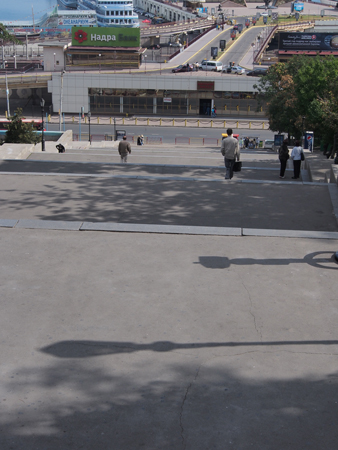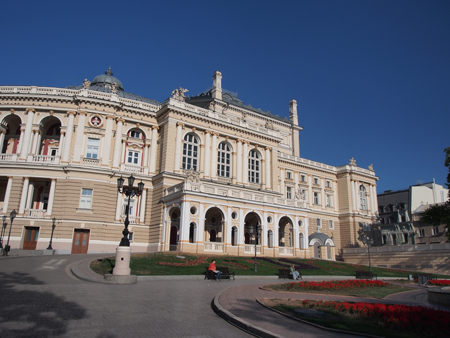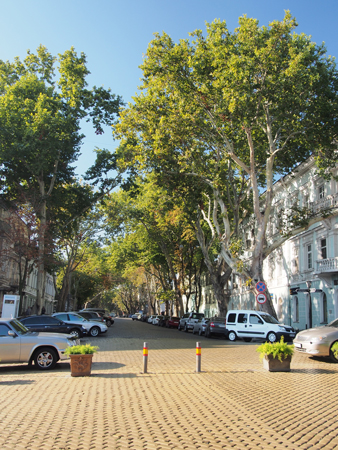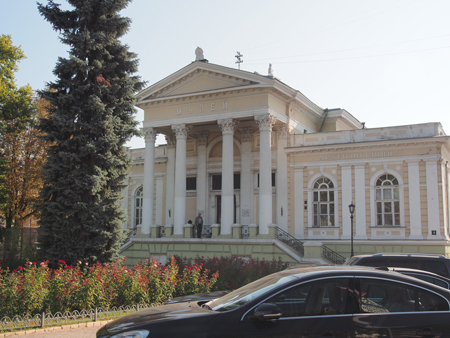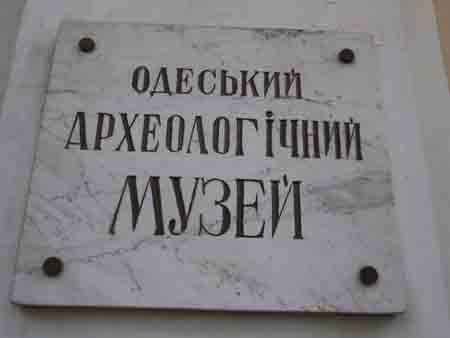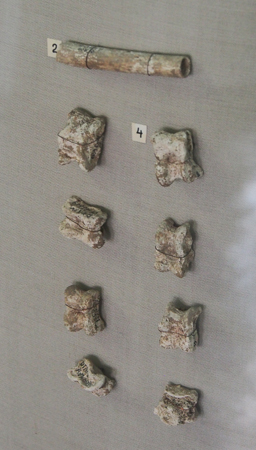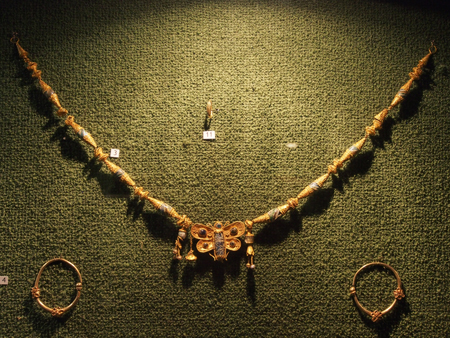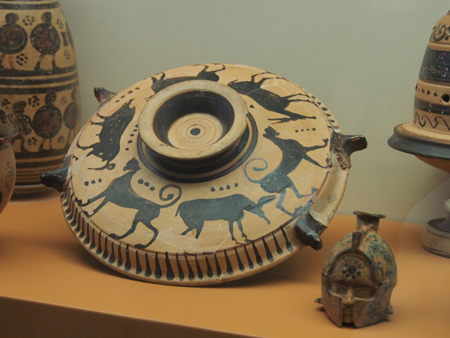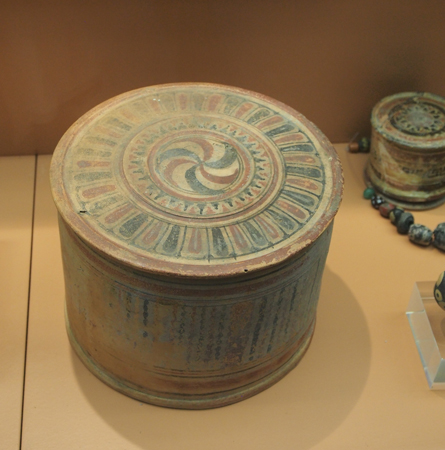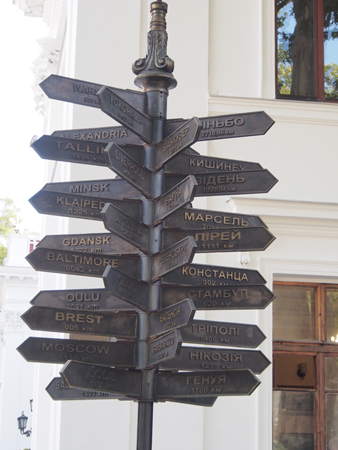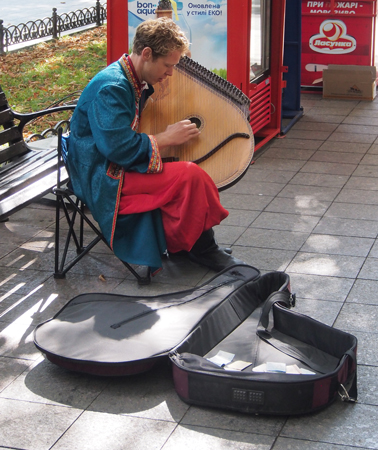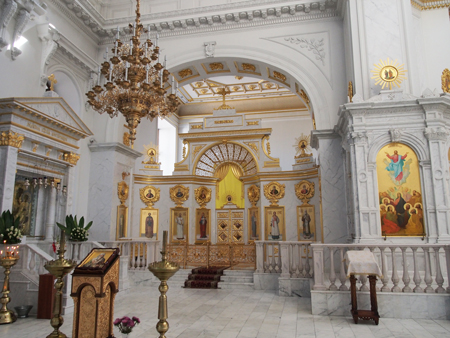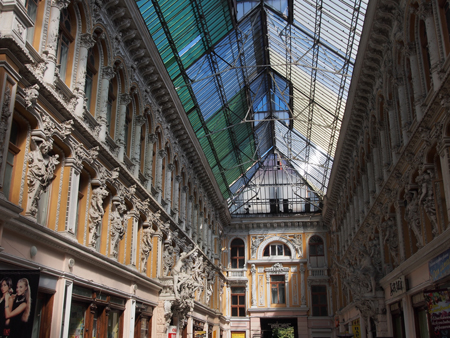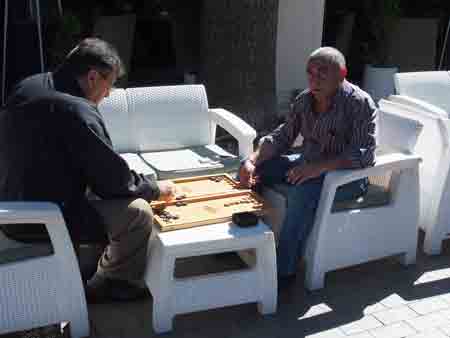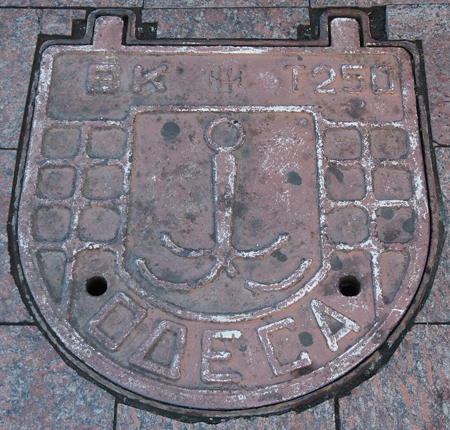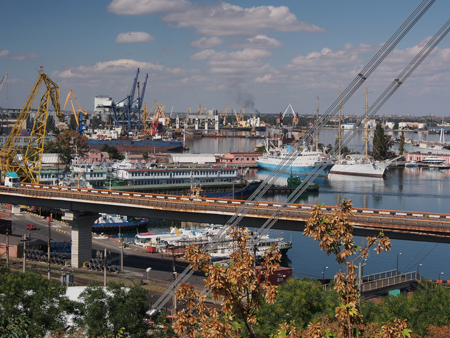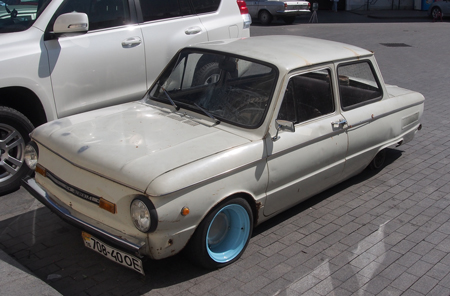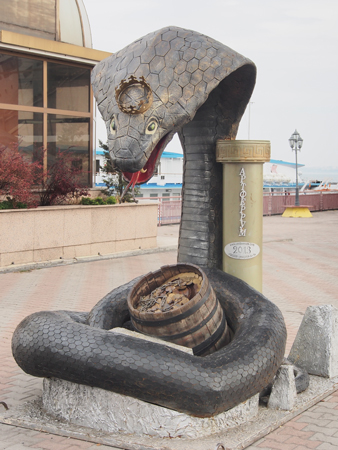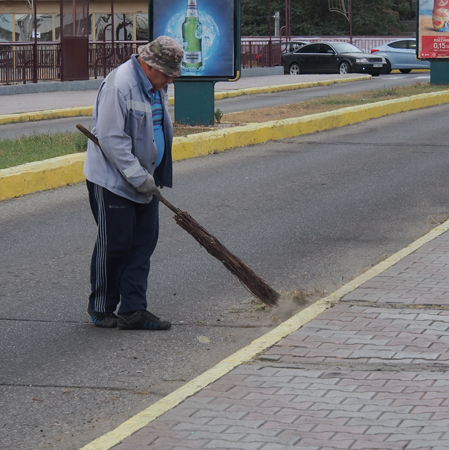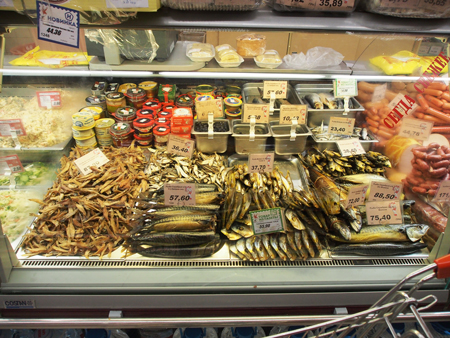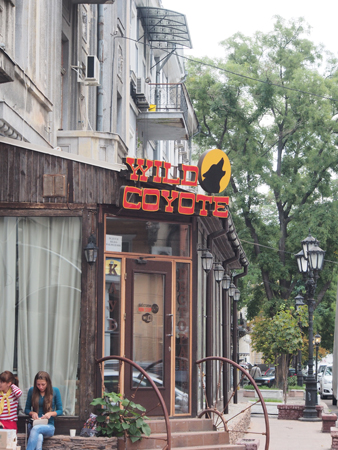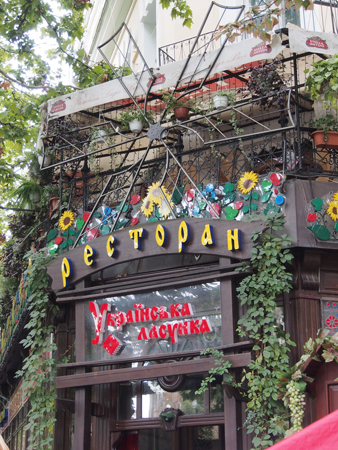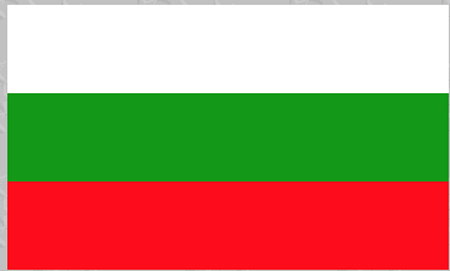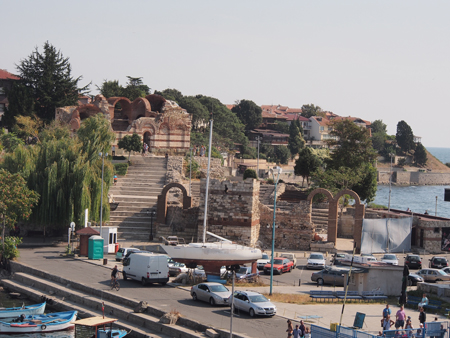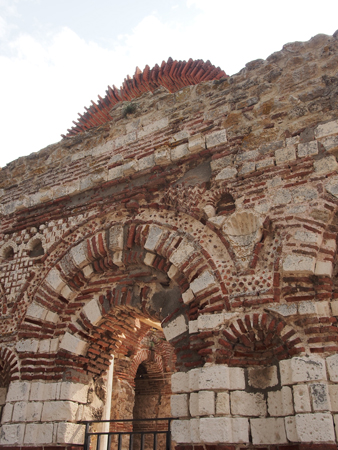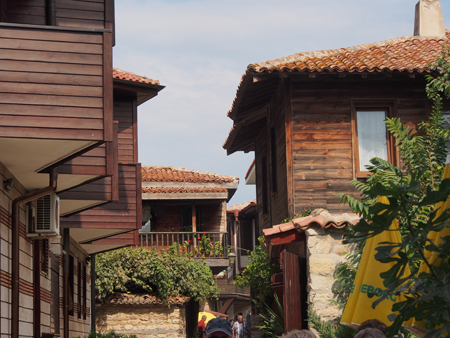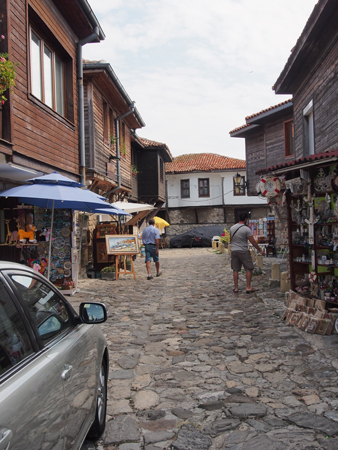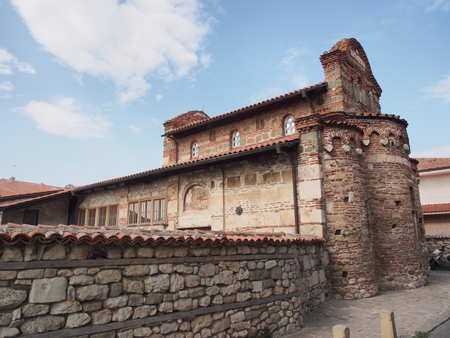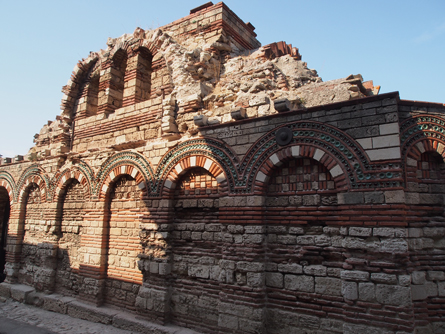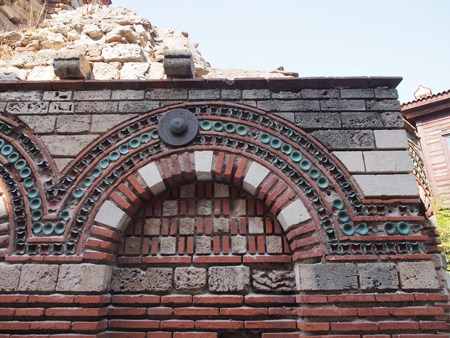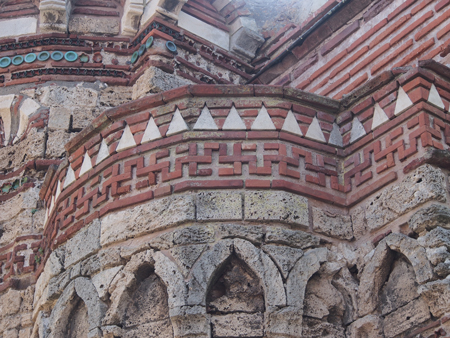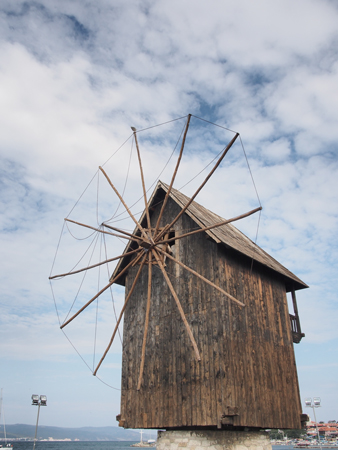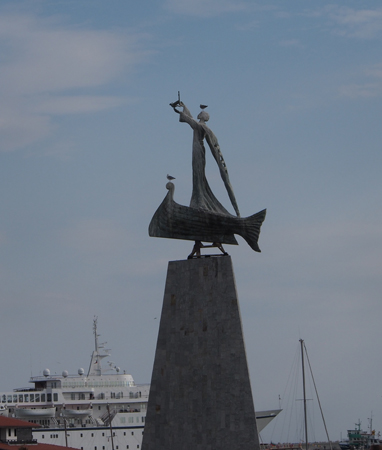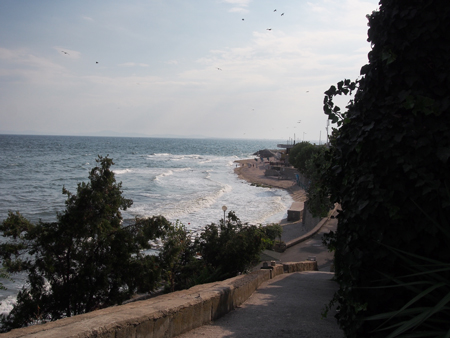Mon., 9/9/13 – Odessa, Ukraine
This morning we docked at Odessa, Ukraine on the northeastern coast of the Black Sea. There were ancient colonies here but the present city was established by Catherine the Great in her desire to expand Russia by creating a “New Russia” in the south. She invited immigrants from the east and the west who had to agree to become Russian Orthodox and to pay taxes to Moscow. Odessa became multicultural and even now there are 130 nationalities represented in Odessa.
|
Our morning started at the top of the Potemkin Steps that lead down to the sea where our ship is docked. In 1905 the 192 steps were the scene of a brutal massacre that further fueled the Russian Revolution. The crew of the ship, Potemkin, mutinied and killed their Russian officers. As the ship sailed into Odessa, citizens gathered on these steps to cheer home the sailors. Russian army men stood at the top and shot down on the people, killing many men, women, and children. The steps are also of architectural importance. From the bottom one looks up and sees only the steps. From the top, one sees only the landings. Since the bottom is twice as wide as the top, it looks like the sides are perfectly parallel when viewed from the top.
|
Potemkin Steps
|
Potemkin Steps |
Next stop on our city tour of Odessa was at the Opera House to which everyone on the ship can go this evening for an exclusive ballet performance. At that time we will see the inside. The Opera House and Ballet Theater was built in 1887 and has some of the best acoustics in the world – their opinion.
|
|
|
Street scene
|
We walked across the street to the Archeological Museum. Our visit to this museum needed commentary although some signs were in English. The museum was built in 1825 but recently the first floor displaying 5th and 6th c. Greek artifacts was refurbished with money from the Leventis Foundation of Cyprus that aims to preserve ancient Greek culture. The exhibits were collected from all around the Mediterranean and the Middle East and much of the collection belonged to one man (Anastasios George Leventis). The items are in wonderful condition and included gorgeous Greek black and red urns and bowls with mythological scenes and many beautiful small figurines. Downstairs were relics from ancient Slavs, Scythian (from ancient Iran) nomads (7 to 6 BCE), Egyptian cultures, and a Golden Room of ancient jewelry and coins. We even found another set of ankle bones used in the game we learned to play when we were in Mongolia! All of the pieces were in extraordinarily good condition and make us glad that all of the Egyptian or Greek artifacts are not all in their original countries. As Egypt continues to exist in a state of political unrest and tourism is nearly suspended, we can still see and learn about these ancient wonders in safe, well preserved sites. This was a magnificent small museum.
|
|
Archeological Museum |
Archeological Museum (Ukrainian alphabet)
|
More ankle bones
|
Gold jewelry |
Archeological Museum |
Archeological Museum
|
We walked to the City Hall Building that was originally a stock exchange. In the city hall square is a statue of Pushkin, giving him curly hair because one of his grandparents was African. We walked along the historic Primorsky (or Maritime) Boulevard lined with horse chestnut trees and aristocratic palaces of the 1900’s.
|
|
Alexander Pushkin
|
Musician playing the Bandura, a Ukrainian plucked folk music instrument, on Primorsky (Maritime) Boulevard |
Transfiguration Cathedral
|
Transfiguration Cathedral |
We walked through the very elaborate Passage Department Store built in one year in 1899. There are shops on the first floor and a hotel on the second and third floors. Out on Deribasovskaya Street we walked through the Odessa City Garden and looked at the "humor chair” and fountains, flowers, and an iron band shell.
|
|
Inside the Passage Department Store |
“Humor chair” in the Odessa City Garden
|
Playing Backgammon |
Manhole cover
|
Londonskaya Hotel (lunch)
|
Busy shipyard |
Tues., 9/10/13 – Odessa and at Sea
|
|
Statue of Catherine the Great
|
Old car with a problem |
Statue at the dock
|
Street cleaning |
OSHA would not approve!
|
Market |
Market |
Interesting restaurant sign
|
Interesting restaurant sign
|
Wonder what this all means? |
Wed., 9/11/13 – Nessebar, Bulgaria
We were at sea all night and this morning. The winds were increasing and the captain sped up and got us behind the seawall and into dock early. It is at least 10° hotter now that we are in the middle of the western coast of the Black Sea. Instead of a band to greet us we had to go through passport control and be stamped in and out of the port.At 2 PM we took a walking tour at snail’s pace of the UNESCO city of Nessebar. There are 40 churches in this small fishing village turned sea resort. Some of the churches were established in the 5th or 11th or 16th c. The streets are narrow and made of cobblestones. The houses are limestone on the ground level and timber above. Most of the second floors extend out over the street. The churches are built of limestone and are decorated with red brick and they all look alike. After our three block stroll we visited the small Archeological Museum, which displayed some Greek, Roman, and Thracian pottery, coins, jewelry, wine amphora, and ancient (maybe 3,000 year-old) anchors. In the basement were icons from some of the churches. Trade in Nessebar was based on salt, bee’s wax, and wine.
Flag of Bulgaria
|
|
Nessebar - Harbor and entry to town |
St. John Aliturghetos Church
|
Typical house overhanging the street |
Very rough cobblestone streets
|
|
St. Stephen Church |
Interesting stonework
|
Interesting stonework |
Christ Pantocrator Church
|
Interesting stonework |
I think we have absorbed all of the ruins and archeological museums we can handle and we were glad to get outside again. We walked the causeway to look at the windmills, which milled corn or flour and an interesting statue of Saint Peter, the patron saint of fishermen. We walked back to the ship through the small old town, which lost all of its appeal because of the steady line of souvenir shops all selling the same things. It is time to head home!
|
|
Windmill
|
Statue of St. Peter |
Nessebar shoreline
|
|
Thurs., 9/12/13 – Istanbul to Newark, NJ
We disembarked the MV Aegean Odyssey at 8:45 and were taken to the Istanbul airport for our 2 PM flight to Newark, NJ. Twelve hours later we were back in the US. Since there were no United connecting flights to Denver until the next day, we checked into the Airport Hampton Inn. We ate a light dinner at the Renaissance Hotel next door. We walked there in the pouring rain with lightening and thunder and were glad we weren’t still in an airplane.Fri., 9/13/13 – Friday the 13th! – Newark to Denver
We ate a nice hot breakfast (waffles or cheese omelet and sausage) and got on the 6:30 AM shuttle for our 9:50 United flight to Denver. On the shuttle a woman asked where we were going and when we said Denver she said she was reading in the paper that there was “flooding along the Front Range, wherever that is.” This was the first we knew about the 18 inches of rain in our area that crested rivers as high as 18 feet above flood height. To make a four-day saga short, Estes Park was isolated with no roads open because of washed out roads in all of the canyons. Phone and internet service was down and the only news we could get was from the local Denver TV stations.
We got into Denver and called our friends Doug and Donna. We went to their house to contemplate our options and decided to check into a hotel (Sleep Inn) in Aurora for three nights until the National Guard said there was a long way to get to Estes Park that was open only to residents and flood damage work trucks.
We drove to Blackhawk and to Nederland and into Estes Park on Monday. Destruction from the water is devastating but our house had no water in the basement and only suffered the same chimney/roof leak that has been a problem since the roof was shingled. We are exceedingly lucky compared to many other people in our area!
What a trip! We saw an ancient part of our world that has survived for centuries only to return home to see how impermanent structures can be.


